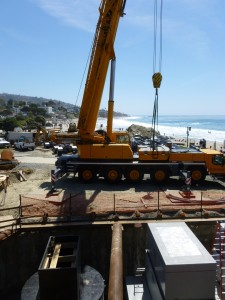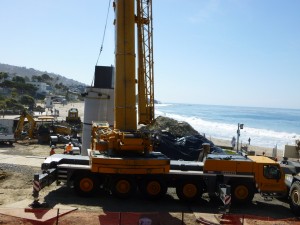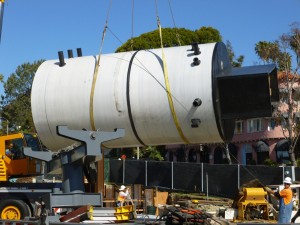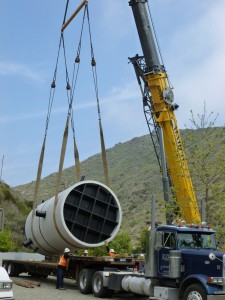June 2013, Vol. 68, No. 6
Features
On The Beach: Laguna Beach Completes Lift Station Replacement

It’s hard to imagine a more sensitive site for a lift station reconstruction: 25 feet under the sands of a popular five-star southern California beach in the heart of a famous artist colony. The Laguna Beach Lift Station reconstruction site shares the beach with a crowded boardwalk, volleyball and basketball courts, a playground and a historic lifeguard tower. A coveted marine preserve sits offshore.
“It was like building a ship-in-the-bottle,” said David Shissler, Laguna Beach director of water quality, who is in charge of the lift station reconstruction. “To begin with, we’re 14-feet under sea level. We had to deal with ground water intrusion on one side and the sea water on the other in the most prominent location in the city — so we had to have dependability and flexibility to do it right the first time. That’s one of the reasons we chose HDPE for the job. The HDPE lifespan on a project like this puts it in a different world — we won’t have to replace this thing again any time in the near future.”

The 120 inch-diameter HDPE Spirolite structures used on the site were manufactured by Industrial Pipe Fittings (IPF), Houston, to ASTMF 1759 standards to withstand all the forces acting on the structures, including down-drag, buoyancy, compressive strength and buckling. The structures were made of a 3.9 inch-thick solid wall HDPE to resist the design forces, including their installation 14-feet below sea level. Recently, IPF manufactured a similar product for a tar sands project in Fort McMurray, Alberta, Canada. Those 120-inch structures were 9-inches thick and buried 90-feet deep.

“We have seen tremendous success with Spirolite HDPE manholes and structures being specified in lieu of concrete because the material is impervious to the corrosive effects of the sewer gas in sanitary sewers,” said Hank Jones, Western Flow marketing partner, who consulted on the design. “HDPE manholes and structures are welded together making them bottle tight, which prevents ground water intrusion or sewage contamination of the environment. Spirolite manholes and structures have been manufactured in the United States for more than 35 years.”

The $5 million Laguna Beach remodel replaces an 80-year-old lift station that was subject to structural deterioration and ongoing problems with odor, electrical, mechanical and maintenance issues. The new lift station fulfills one of several projects on a laundry list of requirements established in 2003 by the Federal EPA. The station bolsters the city’s ongoing program to prevent sewer spills and meet the mandates of the Federal Clean Water Act and the National Pollution Discharge Elimination System permit.
[inline:Laguna20Bch207.jpg]
The unique design includes a lifeguard headquarters building that is currently being built adjacent to the station where it shares a common shoring wall with the lift station. The lift station is underground with only its electrical control panel and emergency generator located above grade within a lifeguard station closet. Below ground is the sophisticated pre-manufactured lift station structure with a 10-foot diameter HDPE primary lift station wetwell and an adjacent 10- foot diameter bypass wetwell. This HDPE bypass structure was engineered with pipes, ladders, a fiberglass platform and a unique valving system that allows it to function as a bypass manhole in an emergency.

“We chose HDPE because it’s cleaner to use. The inevitable build-up of hydrogen sulfide gas and sulfuric acid eats away at concrete. There are a lot of corrosion issues with lift stations that are lined with polyurethane liners. I’ve seen liners fail many times in my career. Acid destroys these facilities,” said Shissler.
The Laguna Beach lift station was fully functional in August 2012 with the lifeguard station headquarters slated for a January 2014 completion.




Comments